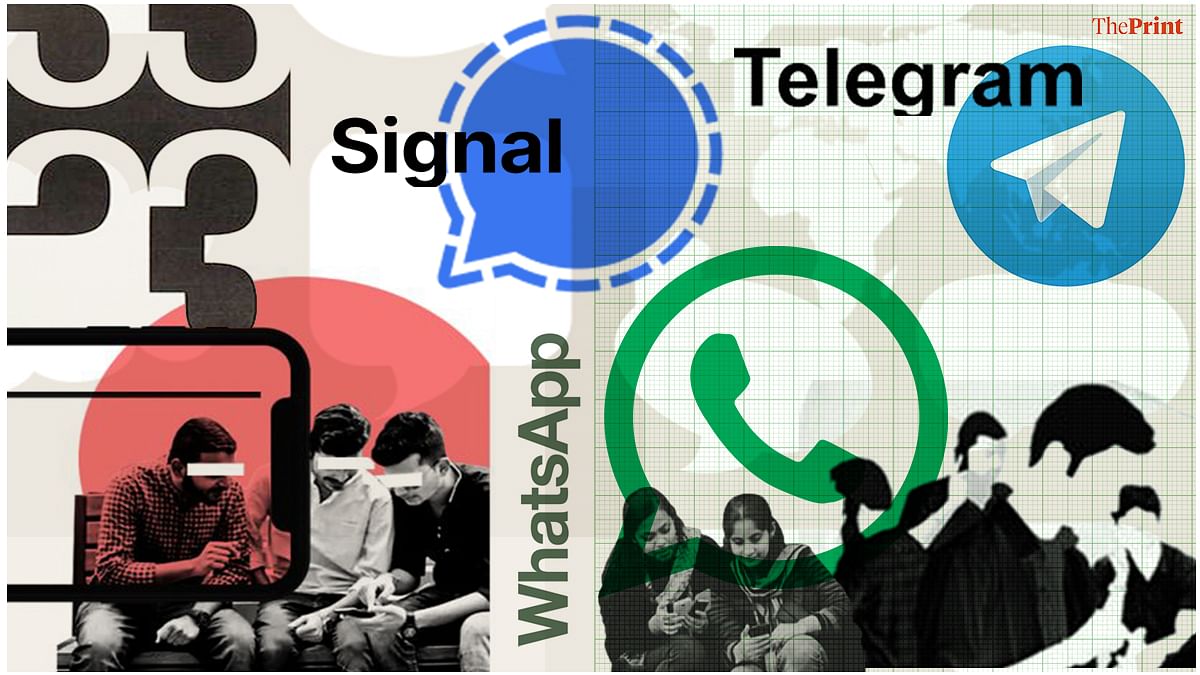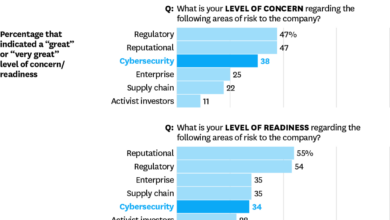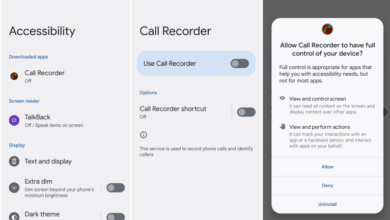
Data on WhatsApp and Telegram is Vulnerable, Say Experts
Data on whatsapp and telegram is vulnerable say experts – Data on WhatsApp and Telegram is vulnerable, say experts, and that’s a pretty scary thought, isn’t it? We all rely on these apps for personal and professional communication, often sharing sensitive information without a second thought. But what happens when that information isn’t as secure as we believe? This post dives into the security concerns surrounding these popular messaging platforms, exploring the vulnerabilities, user habits that exacerbate risks, and what you can do to better protect yourself.
From weak passwords to downloading files from questionable sources, we’ll uncover the common pitfalls that leave your data exposed. We’ll also look at the role of metadata and how even seemingly innocuous information can be used to piece together a concerning picture. Plus, we’ll explore the ongoing battle between privacy and law enforcement access, and how technological advancements might shape the future of messaging security.
Vulnerability of WhatsApp and Telegram Data
Recent reports highlighting the vulnerability of WhatsApp and Telegram data have understandably caused concern. While both platforms employ robust encryption, inherent weaknesses in their systems and the broader digital landscape leave them susceptible to various attacks. This post will delve into the specifics of these vulnerabilities, comparing their security approaches and examining past incidents.
WhatsApp and Telegram Encryption Methods: A Comparison
WhatsApp primarily uses end-to-end encryption based on the Signal Protocol. This means that only the sender and recipient can read messages; even WhatsApp itself cannot access their content. Telegram, however, uses a client-server encryption model for most messages, meaning Telegram’s servers can access the data, although they claim to not store the contents of messages. For secret chats, Telegram employs end-to-end encryption similar to WhatsApp.
The strength of WhatsApp’s end-to-end encryption for all messages is a significant advantage over Telegram’s hybrid approach, although Telegram’s end-to-end encrypted secret chats offer comparable security. However, the reliance on the client-side for encryption in both systems leaves them vulnerable to vulnerabilities in the applications themselves or on the user’s device.
Known Exploits and Weaknesses
Several vulnerabilities have been identified in both platforms. These include vulnerabilities in the client-side applications, potentially allowing attackers to inject malicious code or intercept communications. Weaknesses in the implementation of end-to-end encryption, though rare, could also allow attackers to decrypt messages. Furthermore, metadata associated with messages, such as timestamps and recipient information, is often not encrypted and can reveal sensitive information about communication patterns.
Phishing attacks targeting users, tricking them into revealing their account credentials or downloading malicious software, also represent a significant threat. The security of both platforms is also dependent on the security of the user’s device, and a compromised device could allow an attacker access to messages even with end-to-end encryption in place.
Examples of Past Data Breaches and Security Incidents
While neither WhatsApp nor Telegram have experienced large-scale breaches directly compromising the content of end-to-end encrypted messages, several incidents highlight the broader security challenges. For example, in 2019, a vulnerability in WhatsApp allowed attackers to remotely install spyware on targeted devices. This vulnerability didn’t directly break end-to-end encryption, but it demonstrated how weaknesses in the client application could lead to serious compromises.
Furthermore, data breaches targeting user databases containing phone numbers and other metadata associated with accounts have occurred in the past, highlighting the risk of non-encrypted information. These incidents underscore the importance of strong password practices and the need for regular security updates.
Hypothetical Data Compromise Scenario
Imagine a scenario where a user receives a seemingly innocuous message containing a link. Upon clicking this link, they unknowingly download a malicious application that exploits a zero-day vulnerability in their WhatsApp or Telegram client. This malicious application then grants an attacker access to the user’s device, allowing them to potentially intercept messages even if end-to-end encryption is in place, or access unencrypted metadata associated with their communications.
The attacker could gain access to contact lists, communication patterns, and potentially even gain access to other data stored on the user’s device, far exceeding the scope of the initial breach of the messaging app itself. This demonstrates how seemingly isolated vulnerabilities can lead to far-reaching consequences.
User Practices Contributing to Vulnerability

While WhatsApp and Telegram have implemented robust security measures, user behavior often plays a significant role in determining the overall security of their accounts and data. Understanding common user practices that increase vulnerability is crucial for mitigating risks. Many security breaches stem not from inherent weaknesses in the platforms themselves, but from easily avoidable user errors.
Many vulnerabilities arise from simple oversights in user practices. These practices, while seemingly innocuous, can expose sensitive information to malicious actors. Understanding and addressing these issues is key to enhancing the security of your WhatsApp and Telegram accounts.
Weak Passwords and Password Reuse
Using weak passwords, such as easily guessable combinations or common words, significantly weakens account security. A weak password makes it easier for attackers to gain unauthorized access through brute-force attacks or dictionary attacks. Reusing the same password across multiple online accounts amplifies this risk. If one account is compromised, attackers can potentially access all accounts using the same password.
Consider the scenario where a user uses “password123” for their WhatsApp, email, and banking accounts. A breach on one platform instantly compromises the others. Strong passwords, incorporating a mix of uppercase and lowercase letters, numbers, and symbols, and unique passwords for each account are essential. Password managers can assist in generating and securely storing complex passwords.
Downloading Files from Untrusted Sources, Data on whatsapp and telegram is vulnerable say experts
Downloading files from untrusted sources within WhatsApp and Telegram poses a substantial risk. Malicious actors can disguise malware as seemingly innocuous files, such as images, documents, or videos. Opening these infected files can lead to malware installation, data theft, or device compromise. Imagine receiving a seemingly harmless image file from an unknown contact. This image could contain malicious code that steals your contacts, photos, or even banking details.
Always exercise caution when downloading files, verifying the sender’s identity and legitimacy before opening any attachments. Avoid downloading files from unknown or suspicious sources.
Using Unverified or Third-Party Apps
Connecting unverified or third-party apps to WhatsApp or Telegram can introduce significant security vulnerabilities. These apps may request excessive permissions, potentially granting access to sensitive data beyond what is necessary for their functionality. Some may even contain malicious code that can compromise your account or device. For example, a seemingly harmless “WhatsApp booster” app might request access to your contacts and messages, enabling data theft or manipulation.
Only install apps from trusted sources and carefully review the permissions requested before granting access. Always be wary of apps promising unrealistic functionality or enhancements.
Mitigation Strategies and Best Practices

Protecting your data on WhatsApp and Telegram requires a multi-pronged approach encompassing user vigilance and platform improvements. Both users and developers bear responsibility for maintaining a secure environment. By implementing the strategies Artikeld below, you can significantly reduce your risk of data breaches and unauthorized access.
Understanding the vulnerabilities discussed previously highlights the need for proactive measures. This section details practical steps users can take to improve their security posture and recommendations for developers to enhance platform security features.
User Best Practices for Enhanced Data Security
The following table Artikels key practices to bolster your WhatsApp and Telegram security. Implementing these measures will significantly reduce your vulnerability to various threats.
| Practice | Description | Risk Reduction | Example |
|---|---|---|---|
| Enable Two-Factor Authentication (2FA) | Adds an extra layer of security requiring a code from a secondary device beyond your password. | Prevents unauthorized access even if your password is compromised. | Activating the 2FA option in WhatsApp or Telegram’s settings, usually involving a code sent to your email or phone. |
| Regular App Updates | Keeps your apps up-to-date with the latest security patches. | Addresses known vulnerabilities and mitigates potential exploits. | Enabling automatic updates in your device’s app store or manually checking for updates regularly. |
| Strong Passwords | Use unique, complex passwords that are difficult to guess. | Reduces the likelihood of brute-force attacks. | Using a password manager to generate and store strong, unique passwords for each account. |
| Beware of Phishing | Be cautious of suspicious links or requests for personal information. | Protects against malicious actors attempting to steal your credentials. | Verifying the sender’s identity before clicking links or providing information; avoiding suspicious messages. |
Recommendations for WhatsApp and Telegram Developers
Improving platform security requires a concerted effort from developers. The following recommendations aim to enhance user protection and address potential vulnerabilities.
Developers should prioritize implementing robust end-to-end encryption protocols, regularly auditing their code for vulnerabilities, and providing users with clear and concise security information. Investing in advanced threat detection systems and proactively addressing reported security issues are crucial. Furthermore, transparent communication with users regarding security updates and incidents builds trust and fosters a secure environment.
Identifying and Reporting Suspicious Activity
Proactive monitoring and reporting are crucial for maintaining account security. Users should be vigilant about suspicious login attempts, unexpected messages, or unusual activity within their accounts. Prompt reporting allows platforms to investigate and take appropriate action.
Reporting mechanisms within WhatsApp and Telegram should be readily accessible and user-friendly. Users should be guided on what information to provide when reporting suspicious activity, such as screenshots, timestamps, and any relevant details. The platforms should provide timely feedback on reported issues and keep users informed of the investigation’s progress.
The Role of Metadata and Data Privacy
The seemingly innocuous act of sending a message via WhatsApp or Telegram generates a surprising amount of data beyond the message content itself. This metadata, often overlooked, reveals a wealth of information about users and their interactions, raising significant privacy concerns. Understanding the implications of this metadata and the legal frameworks surrounding it is crucial for both users and developers of these platforms.Metadata associated with WhatsApp and Telegram messages includes timestamps, sender and recipient information, device identifiers, message delivery status, and even geographical location data (depending on device settings and app permissions).
This seemingly innocuous data can be pieced together to build a detailed profile of a user’s activities, relationships, and potentially sensitive personal information. For instance, frequent communication between two individuals at specific times and locations might reveal a romantic relationship, business dealings, or even a planned meeting. The cumulative effect of this metadata paints a much broader picture than the message content alone.
Metadata Inference and Sensitive Information
The ability to infer sensitive information from metadata is a serious concern. Law enforcement agencies, for example, might use metadata to track individuals’ movements, identify potential suspects, or build cases based on communication patterns. Similarly, malicious actors could leverage metadata to target individuals for phishing attacks, blackmail, or other forms of cybercrime. The sheer volume of metadata collected by these platforms makes it a valuable resource for both legitimate and illegitimate purposes.
Consider a scenario where metadata reveals frequent communication between an individual and a known extremist group at specific times and locations – this could be used to infer involvement in potentially illegal activities, even without accessing the content of the messages themselves.
Balancing User Privacy and Law Enforcement Access
The tension between protecting user privacy and allowing law enforcement access to data is a complex legal and ethical challenge. Governments worldwide grapple with balancing the need for security and crime prevention with the fundamental right to privacy. This often involves creating legislation that allows for lawful access to data under specific circumstances, such as warrants or court orders.
However, the process of obtaining such legal authorization can be time-consuming and may not always be effective in preventing real-time threats. The challenge lies in creating mechanisms that enable access to data when necessary for legitimate purposes while simultaneously preventing abuse and protecting the privacy of innocent individuals. The development of strong encryption methods and the implementation of robust data protection policies are crucial aspects of addressing this challenge.
Legal and Regulatory Frameworks Governing Data Privacy
Data privacy laws vary significantly across jurisdictions. The European Union’s General Data Protection Regulation (GDPR), for example, imposes strict rules on data collection, processing, and storage, granting individuals considerable control over their personal data. Other countries have their own data protection laws, often with varying levels of stringency. The lack of a universally accepted standard for data privacy creates challenges for global messaging platforms like WhatsApp and Telegram, requiring them to comply with a complex patchwork of regulations depending on the location of their users.
This often involves implementing region-specific settings and data handling practices to ensure compliance with the relevant laws. Non-compliance can result in substantial fines and legal repercussions.
Comparison of WhatsApp and Telegram Privacy Policies
WhatsApp and Telegram differ in their approaches to user privacy, particularly concerning metadata. WhatsApp, owned by Meta, is known for its end-to-end encryption for message content, but metadata is still collected and stored. Telegram, on the other hand, emphasizes a stronger focus on user privacy, claiming to store less metadata and offering more granular control over privacy settings.
However, both platforms have been subject to criticism regarding their data handling practices and transparency. These differences in privacy policies have implications for users who prioritize different aspects of data security. Users should carefully review the privacy policies of both platforms and make informed decisions based on their individual privacy preferences. A thorough comparison of their data collection practices, data retention policies, and transparency reports would reveal a clearer picture of their relative strengths and weaknesses in protecting user privacy.
Experts are warning that WhatsApp and Telegram data is surprisingly vulnerable, highlighting the urgent need for robust security measures. This vulnerability underscores the importance of cloud security solutions like those offered by Bitglass, as detailed in this insightful article on bitglass and the rise of cloud security posture management. Ultimately, protecting your data, even on seemingly secure platforms like WhatsApp and Telegram, requires a proactive and comprehensive approach to cybersecurity.
Future Implications and Technological Advancements: Data On Whatsapp And Telegram Is Vulnerable Say Experts
The vulnerability of WhatsApp and Telegram data, as highlighted by experts, necessitates a proactive approach to future security measures. The ever-evolving landscape of cybersecurity threats demands continuous adaptation and innovation in data protection strategies for these widely used messaging platforms. This necessitates a look into emerging technologies and their potential to fortify data security.The evolving nature of cybersecurity threats presents a significant challenge to messaging platforms.
Experts are warning about the vulnerability of data on WhatsApp and Telegram, highlighting the need for robust security measures. This underscores the importance of secure app development, and building applications with platforms like those discussed in this article on domino app dev the low code and pro code future could offer a more secure alternative. Ultimately, the vulnerability of popular messaging apps reinforces the critical need for developers to prioritize data protection.
Sophisticated attacks, such as targeted phishing campaigns, zero-day exploits, and AI-powered malware, are becoming increasingly prevalent and harder to detect. Furthermore, the sheer volume of data transmitted through these platforms makes them attractive targets for malicious actors seeking personal information, financial data, or sensitive communications. The increasing reliance on these platforms for both personal and professional communication amplifies the potential impact of data breaches.
Emerging Technologies Enhancing Data Security
Several emerging technologies hold the promise of significantly enhancing data security on WhatsApp and Telegram. These advancements range from improved encryption techniques to the implementation of advanced threat detection systems. For instance, post-quantum cryptography, designed to withstand attacks from quantum computers, could be integrated to bolster encryption strength. Furthermore, blockchain technology, with its decentralized and immutable ledger, could be explored for secure data storage and verification.
Homomorphic encryption, allowing computations on encrypted data without decryption, offers another potential avenue for enhanced privacy. Finally, differential privacy techniques can be applied to aggregate data for analysis while preserving individual user privacy.
The Role of Artificial Intelligence in Data Breach Prevention
Artificial intelligence (AI) is poised to play a crucial role in detecting and preventing data breaches on messaging platforms. AI-powered systems can analyze vast amounts of data in real-time, identifying suspicious patterns and anomalies that may indicate malicious activity. This includes detecting phishing attempts, identifying malware, and flagging potentially compromised accounts. Machine learning algorithms can be trained to recognize and respond to new and evolving threats, making the system more adaptive and resilient.
For example, an AI system could analyze communication patterns to identify unusual activity, such as a sudden surge in messages to an unknown recipient or an unusual change in messaging frequency.
A Hypothetical Future Scenario with Enhanced Security
Imagine a future where WhatsApp and Telegram incorporate advanced AI-driven security systems. These systems proactively monitor user activity, instantly flagging suspicious behavior like unusual login attempts or unauthorized access requests. Post-quantum encryption ensures data remains confidential even against future quantum computing threats. Blockchain technology verifies the authenticity and integrity of messages, preventing tampering or forgery. Homomorphic encryption allows for data analysis without compromising user privacy, enabling valuable insights without sacrificing security.
In this scenario, data breaches are significantly reduced, user trust is strengthened, and the overall security posture of these platforms is greatly enhanced, mirroring the success seen in some financial institutions’ adoption of similar advanced security measures.
Closure
Ultimately, the security of your WhatsApp and Telegram data rests on a combination of platform improvements and responsible user behavior. While developers bear the responsibility of building secure systems, we as users must actively protect ourselves by adopting strong passwords, enabling two-factor authentication, and being mindful of the information we share and where we download files from. Staying informed about the latest security threats and best practices is crucial in navigating the ever-evolving digital landscape.
Let’s work together to make our messaging safer!
Essential Questionnaire
What is end-to-end encryption and how does it affect my data’s security?
End-to-end encryption means only you and the recipient can read your messages; not even WhatsApp or Telegram can access them. However, metadata (like who you’re talking to and when) is still accessible.
Are group chats as secure as one-on-one conversations?
Generally, yes, but the security depends on the level of encryption used by the app and the security practices of each participant in the group. A single weak link can compromise the entire group’s security.
How can I report suspicious activity on WhatsApp or Telegram?
Both platforms have reporting mechanisms within their apps. Look for options to report spam, abuse, or suspicious accounts. Report anything that seems out of the ordinary or potentially harmful.





